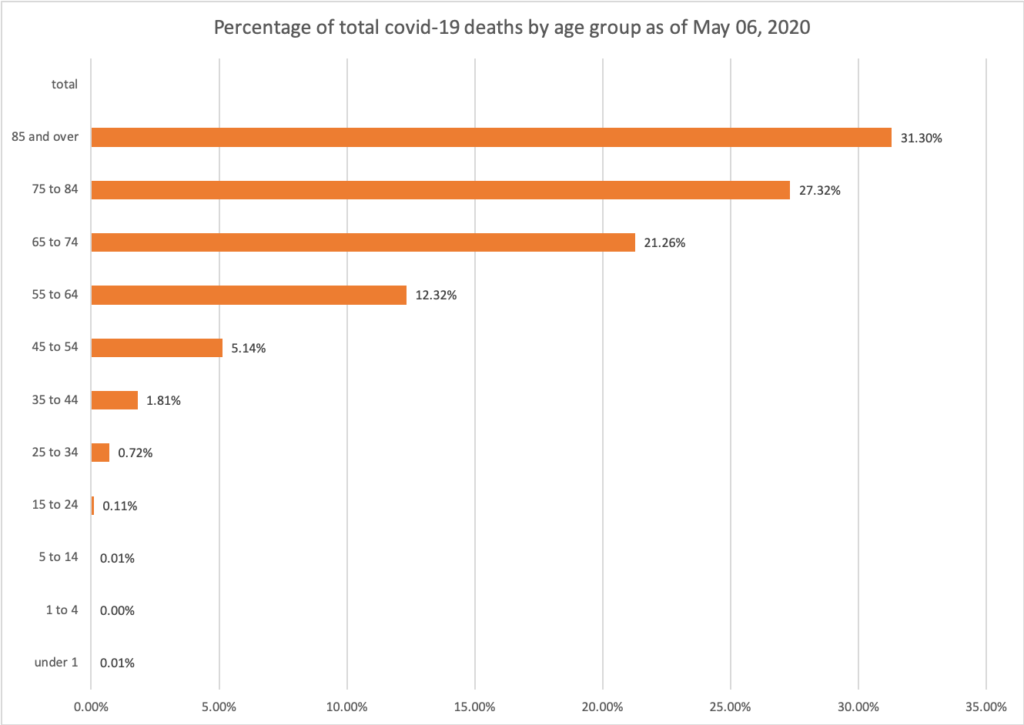Does COVID-19 mortality data justify extending the lockdown?
A lot of states are preparing to reopen now. But with that comes the worry that reopening too soon may result in a second or third wave of infections that will possibly call for a second lockdown. Apart from that, there is also the risk that people may fear patronizing businesses, which would result in a second recession. Moreover, reopening may lead to an increase in COVID-19 deaths.
It is quite logical for businesses to fear that second and new waves of infections may prevent them from attracting customers. But businesses are already facing that risk no matter when they open. Extending the lockdown is merely pushing the inevitable to a later date. Opening sooner will give businesses the time to adjust to social distancing rules and gradually phase their operations before more permanent damage is done.
So, how about the mortality side of the argument?
There are a lot of reasons why extending the lockdown would not provide extra protection. For one, lockdowns will not eradicate the virus. So, it means that regardless of what we do, people will continue to get infected.
Secondly, COVID-19 deaths are concentrated among particular groups of people. So, one-size-fits-all policies do not provide extra protection to those people, but they impose costs on all of us.
The lockdown will not eradicate the virus, Only radical testing will control the outbreak
The lockdown was put in place to slow the spread of the virus so that our healthcare system should not get overwhelmed. But that view has changed. People are pushing for the lockdown to be extended until the virus is eradicated o vaccine is found, which is quite unrealistic.
According to Dr. Fauci, Director of the National Institute of Allergy and Infectious Diseases, the virus may stay with us for a while. And the only thing that will help prevent the spread down is radical testing.
Dr. Fauci said the following about the virus:
It is so transmissible, and it is so widespread throughout the world, that even if our infections get well controlled and go down dramatically during the summer, there is virtually no chance it will be eradicated.
In other words, enough testing to test everybody that needs to be tested. Enough testing so that when someone gets infected, you could immediately do contact tracing and isolation to prevent the infection from going to a couple of infections to hundreds of infections. That’s how you control an outbreak.
COVID-19 deaths are concentrated among the elderly
According to the CDC (Center for Disease Control and Prevention), as of May 6, 44,016 people had died from the coronavirus. But people over the age of 75 made up more than half of all these deaths. The mortality rate among people aged 25 to 54, who make up a huge proportion of the labor force, is quite low.

Minnesota currently has had a total of 591 deaths from the virus. The demographics of the deaths are similar to the nation here too.
Of the deaths announced Monday, six people were in their 90s, two people were in their 80s, one person was in their 70s, three people were in their 60s and one person was in their 50s. Nine of the people were residents of Hennepin County and two lived in Ramsey County. One resident of Rice County and one resident of Stearns county also died.
Nine of the 13 people who died were living in long-term care or assisted living facilities. So far, 472 of the 591 Minnesotans who have died of COVID-19 were residents of long-term care or assisted living facilities. The current death toll only includes Minnesotans with lab-confirmed positive COVID-19 tests.
We can provide targeted protection while still keeping the economy open
Given the fact that most of the Covid-19 deaths are among a specific demographic, it makes sense to focus isolation efforts on the more vulnerable groups while allowing businesses to open. Continuing with the current system in place does not provide extra protection to the most vulnerable groups. Extending lockdowns will likely only increase economic damage without significantly reducing COVID-19.